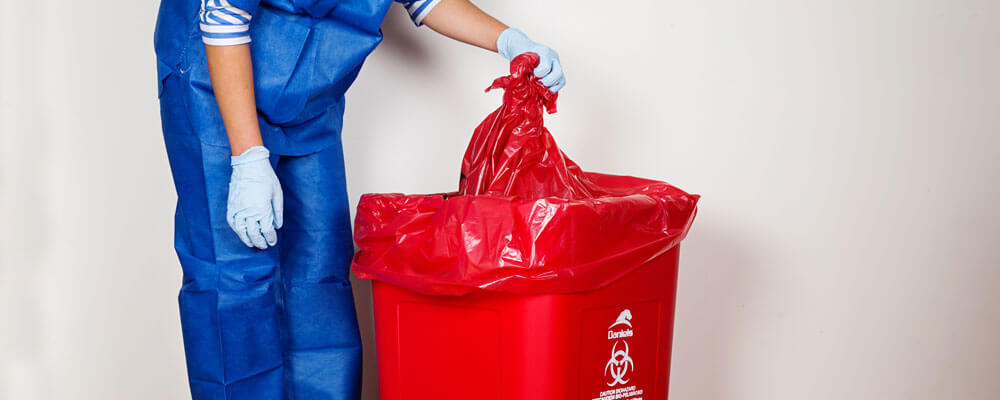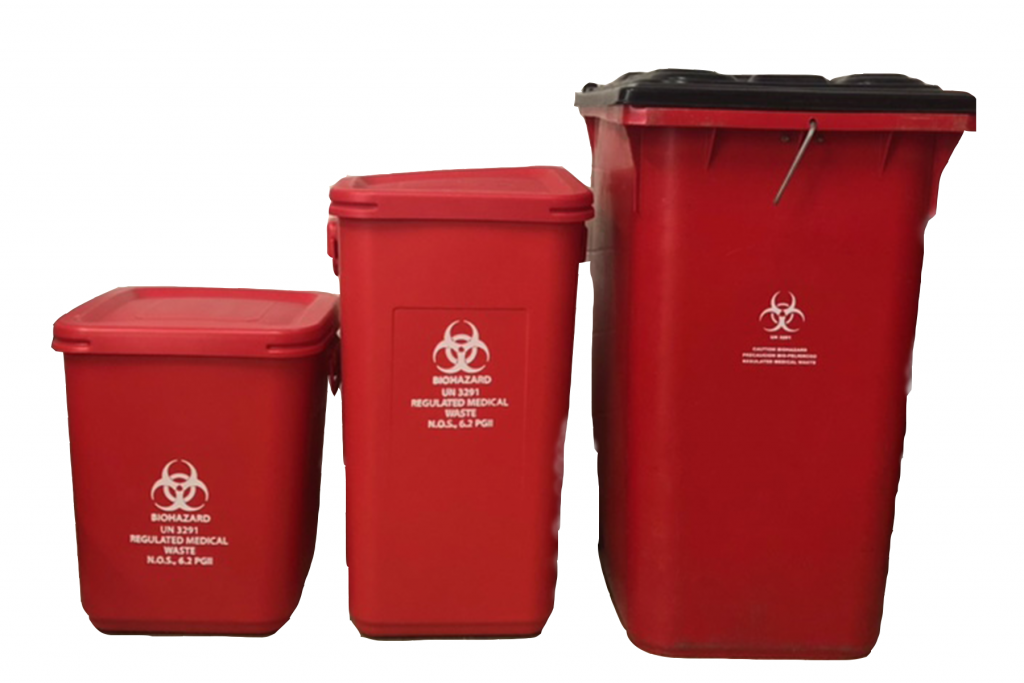Shielding Health And Wellness: Professional Medical Waste Removal Services for a Clean Setting
Shielding Health And Wellness: Professional Medical Waste Removal Services for a Clean Setting
Blog Article
Remain Ahead of Rules: Expert Recommendations on Medical Garbage Disposal
In a globe where the health care industry is frequently developing, it is critical for clinical facilities to stay in advance of laws when it comes to the correct disposal of medical waste. From understanding the various groups of medical waste to implementing the appropriate collection and partition methods, this conversation will certainly offer workable tips and useful insights to assist facilities remain ahead of guidelines in the ever-changing landscape of medical waste disposal.
Comprehending Medical Waste Categories
Recognizing medical waste categories is important for proper disposal and monitoring in healthcare centers. Medical waste refers to any kind of waste produced by healthcare activities that might position a hazard to public wellness or the setting. It is essential to classify medical waste precisely to guarantee its safe handling, transportation, disposal, and therapy.
There are numerous categories of clinical waste that medical care facilities need to be knowledgeable about. The most usual categories include transmittable waste, pathological waste, sharps waste, pharmaceutical waste, and chemical waste. Each category has particular guidelines and laws for its proper administration and disposal.
Pathological waste refers to human tissues, organs, or body parts that require unique handling and disposal. Drug waste consists of ended, unused, or polluted medications that require cautious handling and disposal.
Staying Up-To-Date With Regulatory Modifications
Remaining current with regulatory changes is important for health care facilities to ensure compliance and correct monitoring of clinical waste disposal. medical waste removal service. With regulations regularly advancing, it is crucial for health care facilities to remain updated to stay clear of penalties, penalties, and prospective harm to the environment and public wellness
To stay in advance of governing modifications, medical care centers ought to develop a system for tracking and tracking updates. This can be done by registering for regulative newsletters, going to conferences and workshops, and actively participating in industry associations. Additionally, centers ought to mark a team member or team in charge of staying educated and distributing details to appropriate stakeholders.
Normal interaction with regulative agencies is likewise vital. Health care centers ought to develop connections with neighborhood, state, and government agencies to ensure they are conscious of any adjustments in regulations that might affect their waste monitoring techniques. This can be done with routine conferences, engagement in public remark durations, and aggressive involvement with regulatory agencies.
In addition, health care centers must think about partnering with waste administration firms that focus on medical waste disposal (medical waste disposal services with WasteX). These firms are often well-versed in the latest guidelines and can offer advice and support to make sure compliance
Executing Appropriate Collection and Segregation Techniques
To effectively handle clinical garbage disposal, medical care centers need to establish correct collection and segregation methods in accordance with regulative guidelines. Carrying out these approaches makes sure the risk-free handling and disposal of possibly harmful materials, shields the setting, and decreases the risk of infections and injuries to medical care workers and the basic public.
Appropriate collection and segregation techniques include using designated containers and classifying systems. Health care centers must supply clearly classified containers for various kinds of medical waste, such as sharps, contagious waste, pharmaceutical waste, and non-hazardous waste. These containers ought to be color-coded and clearly significant to prevent confusion and advertise simple identification.
In addition, health care facilities ought to train their staff on the appropriate procedures for collecting and segregating clinical waste. This includes enlightening them on the different kinds of waste, the appropriate containers to use, and the value of complying with guidelines and guidelines. Normal training sessions and correspondence course need to be carried out to make certain that team member continue to be up-to-date on ideal methods.
Furthermore, medical care centers need to develop a system for normal collection and disposal of medical waste. This may entail partnering with certified waste administration firms that concentrate on clinical garbage disposal. These firms will certainly ensure that the accumulated waste is address delivered and taken care of in conformity with regulatory requirements.
Picking the Right Disposal Approaches

Incineration is just one of one of the most reliable and common techniques for dealing with specific types of medical waste, such as pathological waste and sharps. It includes the regulated combustion of waste at high temperature levels, lowering it to ash. Incineration can launch dangerous contaminants right into the air and contribute to air contamination.

Other disposal techniques consist of chemical treatment, microwave treatment, and landfilling. Chemical treatment involves the usage of chemicals to neutralize the waste and sanitize. Microwave treatment makes use of microwave power to warmth and sanitize the waste. Landfilling entails burying the waste in a designated landfill area (medical waste disposal services with WasteX). Landfilling needs to be the last resort due to the possible danger of contamination to dirt and groundwater.
Guaranteeing Conformity Via Paperwork and Training
After carefully considering the proper disposal approaches for clinical waste, medical care centers need to make certain compliance with regulations and reduce ecological influence by carrying out reliable documents and training treatments. This step is important in preserving a lasting and secure setting for both medical care workers and the basic public.

Training is equally important in making sure conformity with laws. Healthcare employees that manage clinical waste should get appropriate training on waste partition, taking care of, and disposal treatments. This training ought to cover topics such as the proper usage of personal protective equipment, navigate to this site recognition of different kinds of waste, and the correct disposal techniques for each waste group. By giving extensive training, health care facilities can encourage their personnel to make informed choices and reduce the risk of inappropriate garbage disposal.
Verdict
Finally, remaining in advance of policies in clinical garbage disposal is critical for medical care centers. medical waste removal near me. Comprehending the various classifications of clinical This Site waste, remaining updated with regulative changes, implementing appropriate collection and segregation approaches, selecting the appropriate disposal approaches, and guaranteeing conformity via paperwork and training are all essential steps. By complying with these standards, medical care companies can successfully take care of and dispose of clinical waste in a risk-free and responsible way
From understanding the different categories of medical waste to executing the best collection and partition methods, this conversation will offer workable suggestions and important understandings to help centers stay ahead of regulations in the ever-changing landscape of medical waste disposal. - medical waste disposal services with WasteX
The most common categories consist of infectious waste, pathological waste, sharps waste, pharmaceutical waste, and chemical waste. Healthcare centers need to supply plainly classified containers for various types of clinical waste, such as sharps, contagious waste, pharmaceutical waste, and non-hazardous waste. Healthcare facilities should establish an extensive system to record and track all aspects of clinical waste disposal, including kinds of waste created, quantities, and disposal techniques utilized. Medical care workers who handle clinical waste must receive ideal training on waste segregation, taking care of, and disposal procedures.
Report this page